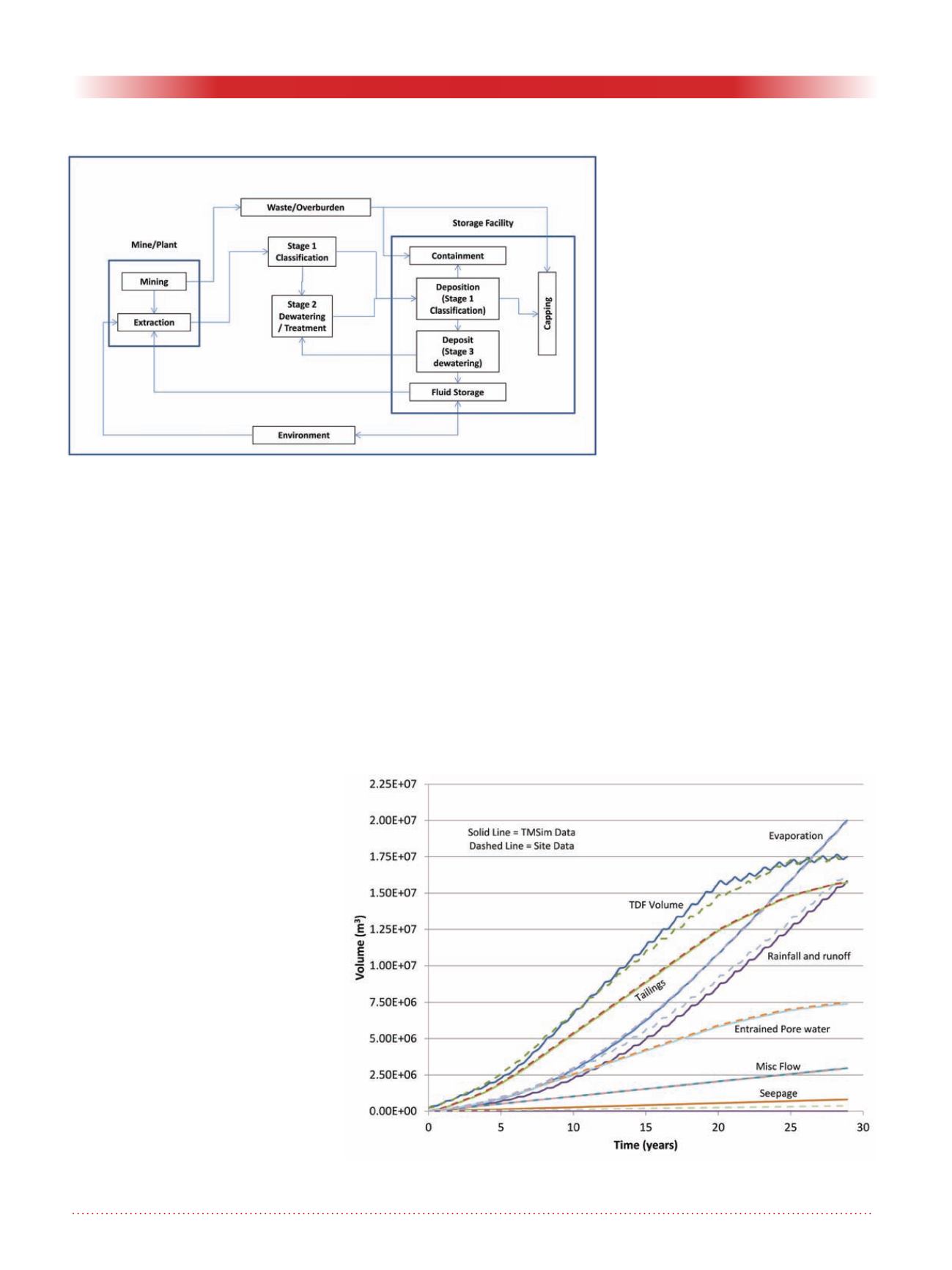
24
Geotechnical News •September 2015
WASTE GEOTECHNICS
mechanical, chemical and electrical
methods described in Sobkowicz and
Morgenstern (2009). These technolo-
gies will typically dewater the tailings
streams to near, but still wet of their
liquid limit. Upon deposition, the
tailings deposits will typically have
strengths of a few hundred pascals
(Boswell and Sobkowicz 2010). The
final stage of dewatering following
deposition (Stage 3) includes time
dependent and environmental dewa-
tering processes. Stage 3 dewatering
includes sedimentation/consolidation
processes and environmental dewa-
tering processes such as freeze/thaw,
desiccation and evapotranspiration
dewatering.
The management of tailings also
includes the construction and opera-
tion of tailings storage facilities
(i.e. impoundments). These may be
constructed from the tailings or from
other mine wastes. The construction
of the impoundments must be coordi-
nated with the deposition and storage
requirements of the tailings and asso-
ciated process water to ensure suf-
ficient storage capacity and freeboard
are available. The required capacity
of the impoundment is a function
of the tailings dewatering processes
(described above), the interaction with
the environment (i.e. seepage, precipi-
tation, evaporation) and process water
demands from the extraction process.
Mine operators manage their tailings
through the implementation of a tail-
ings management system (TMS) that
incorporates all aspects of the tailings
dewatering and their associated stor-
age facilities.
As discussed in Sobkowicz (2012) and
Sobkowicz and Morgenstern (2009),
there are numerous technologies that
may potentially transform the fluid
tailings streams into geotechnically
stable deposits. Additionally, tailings
management plans are constantly
evolving as mining and closure
plans change with the economic and
regulatory environment as well as
stakeholder perceptions. Therefore,
technology providers and the end
users (mine operators and regulators)
can have a tremendous task trying to
understand and evaluate how these
technologies fit within mine plans,
what the implications of adopting a
new technology are and where and
how resources should be invested to
further enhance a technology.
To address the ongoing need to evalu-
ate tailings management technologies
and processes, a dynamic systems
model TMSim was developed (Beier
et al. 2012, Beier 2015). The TMSim
model provides a quantitative tool
that aides in the evaluation of tail-
ings management technologies and
provides guidance to mine operators
on the strengths and limits of such
technologies.
TMSim model
The TMSim simulation tool was
developed using an object orientated,
systems dynamic modeling software
(GoldSim) as the “simulation engine”
that was then coupled with Excel
Figure 1. TMSim conceptual mine and tailings system.
Figure 2. Validation of TMSim volume data with a base metal mine site data
set.


